Introduction to Food HACCP for Wholesalers
Description
Introduction to Food HACCP is a course for all foods including but not limited to:
Bread, Ice Cream, Eggs, Vegan Products, Confections, Grains, Meat & Poultry, Seafood, Juice, Etc.
International HACCP Alliance Certificate issued after completion of the course.
Online Class Requirements:
- Listen to all videos
- Complete Chapter Quizzes
- Complete 18 step exercise
- Complete Final Exam
- Submit 18 step exercise and Student Information sheet
Basic HACCP:
INTRODUCTION to Course
- Describe the purpose of the course
INTRODUCTION TO HACCP
- Seven HACCP Principles
- Introduce the HACCP concept for food safety
PREREQUISITE PROGRAMS
- Review programs that need to be in place before implementation of a HACCP program
- Describe the relationship between Good Manufacturing Practices (GMPs), sanitation, and (SSOPs)
- Describe monitoring, correction, and record-keeping requirements for 8 areas of sanitation
- Review examples of SCPs, monitoring, and records
- Review other relevant regulatory requirements
SAFETY HAZARDS
- Describe the general types of hazards including species-related hazards and process-related hazards
- Describe the species and process-related safety hazards with emphasis on:
- What causes a safety hazard
- What products and processes are affected by the hazard
- How the hazard can be controlled (prevented, eliminated, or reduced to an acceptable level)
PRELIMINARY STEPS
- Introduce preliminary steps that must be completed prior to applying HACCP principles
- Introduce example to demonstrate preliminary steps
CONDUCTING A HAZARD ANALYSIS
- Describe the steps in the Hazard Analysis process
- Introduce and describe the Hazard Analysis form
- Describe how to identify all potential species and process-related hazards
- Describe how to determine what hazards are significant and justify the decision
- Describe control measures for specific types of hazards
- Use an example to illustrate how to conduct a hazard analysis
DETERMINING CRITICAL CONTROL POINTS
- Define critical control points (CCPs)
- Continue with teaching example to identify CCPs
- Discuss tools to help identify CCP
ESTABLISHING CRITICAL LIMITS
- Define and list typical critical limits (CLs) using examples from the curriculum manual
- Introduce the HACCP Plan Form
- Describe control strategy options
- Describe how to select one or more critical limits from a control strategy
- Discuss the use of operating limits
- Use an example to illustrate how to set up a HACCP plan form and select a critical limit
CRITICAL CONTROL POINTS MONITORING
- Define and explain the purpose of monitoring
- Describe the 4 elements of a complete monitoring procedure
- Describe how to identify appropriate monitoring procedures for the critical limit
- Use an example to illustrate how to identify monitoring procedures
CORRECTIVE ACTIONS
- Define and explain the need for predetermined corrective actions
- Explain and identify the components required for a complete corrective action procedure
- Describe how to identify appropriate corrective actions
- Use an example to illustrate how to identify corrective actions
ESTABLISH VERIFICATION PROCEDURES
- Define and explain the need for verification procedures
- Explain types of verification procedures including validation, routine, and periodic verification
- Give examples of typical verification procedures needed including accuracy checks, calibration, testing
- Describe how to identify appropriate verification procedures
- Use an example to illustrate how to identify verification procedures
RECORD-KEEPING PROCEDURES
- Define and explain the need for record-keeping procedures
- Explain types of records needed and the record-keeping requirements in the regulation
- Review examples of types of records in the curriculum
- Describe how to identify appropriate record-keeping procedures
- Use an example to illustrate how to identify record-keeping procedures
RESOURCES FOR PREPARING HACCP PLAN
OVERVIEW OF HACCP REGULATION
- Introduce the HACCP regulation and its format
- Discuss each of the elements of the regulation using the curriculum manual format
FINAL EXAM
Topics for this course
Introduction to HACCP
Introduction20:42
Introduction to HACCP Quiz
Prerequisites and GMPs
Biological Hazards
Chemical Hazards
Physical Hazards
Initial Task to Developing a HACCP Plan
Principle 1: Conduct a Hazard Analysis
Principle 2: Identify Critical Control Points
Principle 3: Establish Critical Limits
Principle 4: Establish Monitoring Procedures
Principle 5: Establish Corrective Actions
Principle 6: Establish Verification Procedures
Principle 7: Establish Record Keeping
Resources for Managing HACCP
HACCP Regulation
Final
About the instructor
David Rosson
Lead Trainer
David L.A. Rosson is a seasoned professional in food safety and training, serving as the Lead Trainer for SafeFoodTest.com. With extensive expertise and credentials, David is recognized as a leader in his field. He holds lead trainer certifications from prestigious organizations including the Food Safety Preventive Controls Alliance (FSPCA), International HACCP Alliance, and Seafood HACCP Alliance.
David's dedication to promoting safe food practices extends to his role as an approved trainer for Food Handler training in both Illinois and Texas. Through his dynamic training sessions, David empowers individuals and organizations to adhere to the highest standards of food safety, ensuring the well-being of consumers and the success of businesses in the food industry.
With a passion for education and a commitment to excellence, David LA Rosson continues to make significant contributions to the field of food safety through his training initiatives and leadership at SafeFoodTest.com.
10 Courses
882 students



